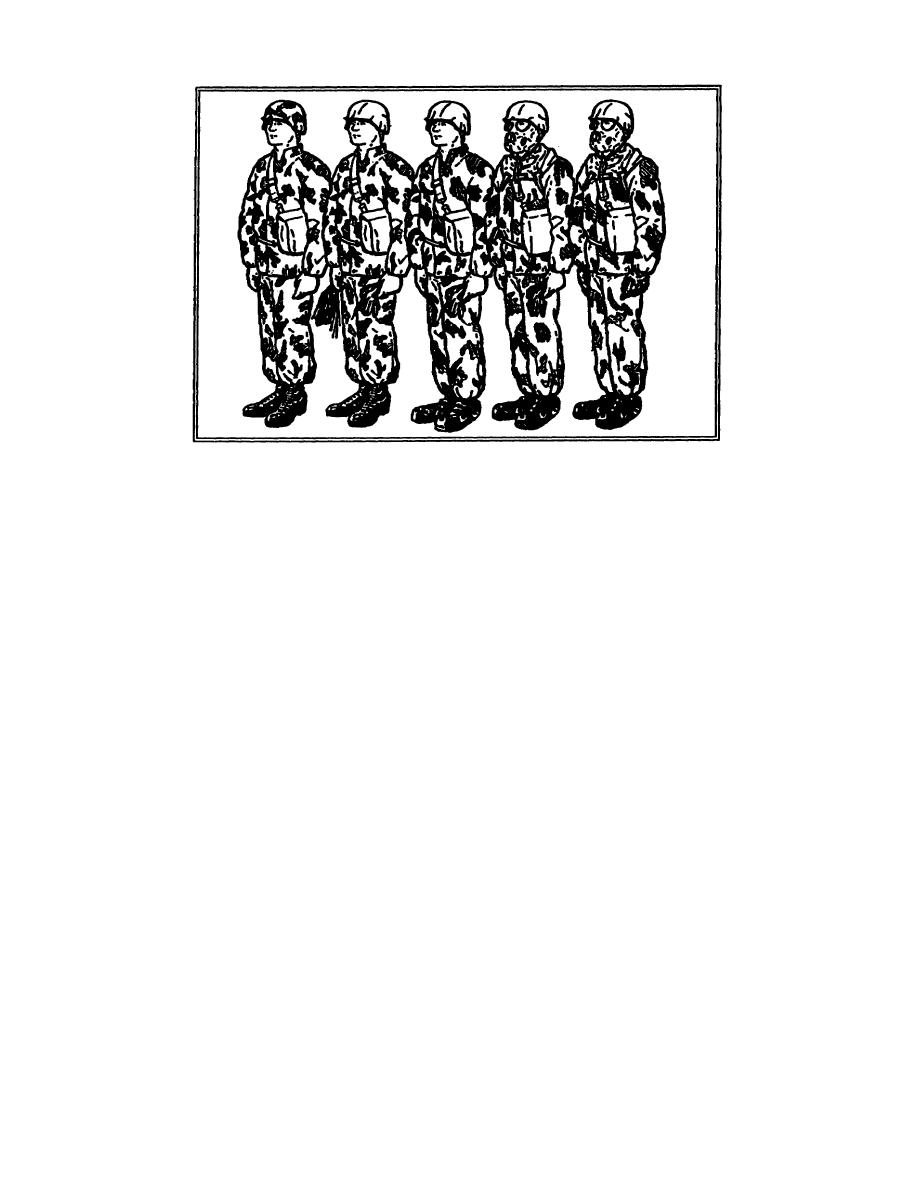
Figure 2-2.
Standard MOPP Levels
c. The Chemical Threat.
In using the MOPP system, the commander will depend upon the unit NBC
personnel for advice about the chemical threat, the relation of the
mission to the MOPP level, the merits of accepting heat casualties
instead of chemical casualties, environmental factors which influence
level of protection, methods of reducing stress and fatigue, and the
physical needs of soldiers in MOPP.
Part of the Threat is the capability of the Threat Forces to employ
chemical agents and the probability that they will do so. Information
on this capability and probability may be provided through
intelligence channels or may be based on previous experience. It also
encompasses the capability of a unit to survive in a chemical
environment. The commander or his NBC personnel can obtain Threat
information from the staff chemical officer at brigade level. This
information may include the expected number of casualties if the
Threat Forces employ certain agents while the unit is maintaining a
given protective posture. The Threat may also include the hazards of
crossing an area contaminated with a persistent chemical agent.
The commander, with help from the staff, must decide if the chemical
threat could prevent the accomplishment of the mission or cause
temporary modification of the mission. The commander may have to
accept the possibility of more heat casualties to prevent excessive
casualties from chemical agents. If the
IS0345
2-10



 Previous Page
Previous Page
